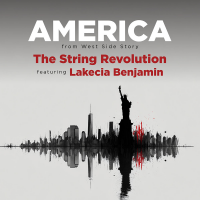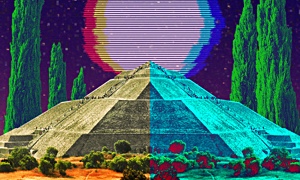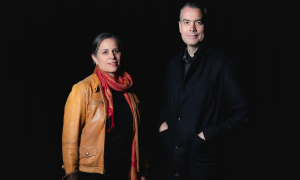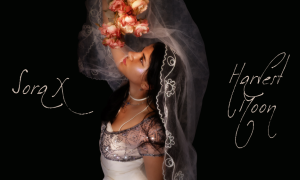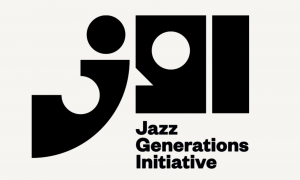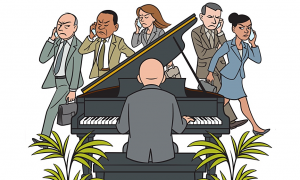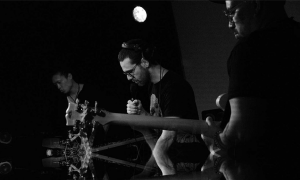April 18, 2007
The National Jazz Museum in Harlem
104 East 126th Street
New York, NY 10035
212 348-8300
Drumming Great Al Harewood Honored by Jazz Museum
Al Harewood, Drummer April 26, 2007
6:30pm-8:30pm
Free To The Public
As a child Al Harewood was a gifted tap dancer affiliated with Bill “Bojangles" Robinson's school of dance. His older brother, Eustace was the first drummer in the Harewood household. But Eustace was drafted into the Second World War and left the house drums unoccupied. After contracting pneumonia as a child, at the Army physical the younger Harewood was declared unfit for military duty. This was the beginning of a fine and illustrious career-to-be as a jazz drummer.
While working at a munitions armory during the war, Harewood taught himself the drums and developed an aptitude for playing the traps with fiery swing. His brother, surprised by his younger brother's ability and growing potential as a drummer when he returned home after the war, started recommending the prodigy for club dates around New York. Harewood quickly became an expert at feeding and supporting each soloist while never getting in the way of a horn player's melodic development.
It was at the Putnam Central Club that JJ Johnson first heard Harewood and asked him to join the two-trombone group JJ had with Kai Winding. Harewood was especially influenced by Art Blakey at this time, particularly Blakey's cymbal work. On one occasion when Blakey was late for a Charlie Parker gig, Harewood happened to be on the scene and stepped in to play, and amazed Bird.
After Johnson's group broke up, Harewood became part of the rhythmic foundation for such jazz luminaries as Stan Getz, Carmen McRae, Mary Lou Williams, the Curtis Fuller-Benny Golson Sextet, Stanley Turrentine, Shirley Scott and Grant Green, to name a few. The great drummer's performances also range from the Newport Festival All-Stars to new jazz premiers and classical works by David Amram with the Brooklyn Philharmonic. He also became an adjunct instructor at the Livingston College of Music at Rutgers University, where he taught drums and percussion.
On April 12, 2007 NEA Jazz Master Barry Harris engaged in a discussion with National Jazz Museum in Harlem executive director Loren Schoenberg about his illustrious career as a pianist and jazz educator.
Harris told the audience at the Museum of the City of New York that he was born in Detroit, Michigan on December 15, 1929 to Melvin and Bessie Harris. “We lived in a happy, poor neighborhood on the east side of Detroit on Hastings Street." He and his four siblings would join their neighbors reveling in Joe Louis matches.
He began playing piano at the age of four, and the instrument became his life-long passion, especially since he wasn't suited to play sports. “I couldn't even do one pull-up," he recalled. Bassist Ray McKinney became a mentor, turning him on to the work of James Weldon Johnson. Works such as Johnson's “God's Trombones" became an early inspiration as he played in a church junior choir. His mother, the church pianist, asked him: “Which are you going to play, church music or jazz?"
Thank God he chose jazz. He credits his mother with supporting his decision.
That's not surprising because jazz lights such as Donald Byrd, Doug Watkins, Hugh Lawson, and Paul Chambers would come by to enjoy his mom's cooking and the Harris family's hospitality.
He went to school with Motown founder Berry Gordy, and recalled the beauty of Gordy's sisters. “Oohh, they were fine! They would get together with my sisters and walk down the street causing traffic jams." In the early days of his career as a professional, dance was still a strong component of the music's culture. “I used to play R&B shows; one of my first gigs was for Ruth Brown. And I first saw Charlie Parker play for dances. When we took the music to the concert hall, we took it from the dancers."
Bird, along with Bud Powell and Thelonious Monk, is the fulcrum of his musical universe. Their inspiration led him to sneak into the Blue Bird Club to play when he was underage. He celebrated his 21st birthday at the legendary venue, and later sat in there with Gene Ammons, and was central to the Blue Bird's house band, which also included Billy Mitchell and Thad Jones.
He also reminisced about his membership in a Detroit jazz society, which had 5,000 members.
He fondly recalled memories of Lester Young, Coleman Hawkins ("He said, 'I don't play chords, I play movements' “), Roy Eldridge, Teddy Wilson, Art Tatum ("Twenty hands"), Monk ("He was very individual, a prolific composer, he practiced playing, not practiced practicing"), Dizzy Gillespie ("The crammer: he crammed all those notes in and end phrases just right"), and Bud Powell, whose version of “Because of You" he could remember as if it were yesterday.
He explained how Charlie Parker's main innovation was rhythmic; and he lamented at how too many jazz musician's following Bird didn't (and don't) play triplets anymore. “Charlie Parker made you play better; when I played with him, he lifted me."
He also discussed his days in New York in the '70s, playing with Charles McPherson, and learning to write for strings out of necessity. Later, he wrote for 10 strings and 20 singers for a date at Cami Hall (then across the street from Carnegie Hall) that also featured Slide Hampton and Tommy Turrentine. More recently, he wrote pieces performed in Toronto, Canada with 80 singers, 200 children and big band.
He's proud of the continuation of the jazz education work that began with the Jazz Cultural Theater, which he launched in an attempt “to keep the music alive."
“Jazz music is the greatest music in the world. It's in the air; everybody can do something different with it: that's the beauty of jazz."
Save the Date!
May 17, 2007: Pianist Marc Cary
May 31, 2007: Trumpeter Stanton Davis
June 14, 2007: NEA Jazz Master, Writer Nat Hentoff
June 28, 2007: Dancer, Choreographer Frankie Manning
The Harlem Speaks series, supported, in part, by public funds from the New York City Department of Cultural Affairs, is produced by the Jazz Museum in Harlem's Executive Director, Loren Schoenberg, Co- Director Christian McBride, and Greg Thomas, host and co-producer of the web's only jazz news and entertainment television series, Jazz it Up!
Time: 6:30pm-8:30pm. This discussion series is free to the public.
The National Jazz Museum in Harlem
104 East 126th Street
New York, NY 10035
212 348-8300
Drumming Great Al Harewood Honored by Jazz Museum
Al Harewood, Drummer April 26, 2007
6:30pm-8:30pm
Free To The Public
As a child Al Harewood was a gifted tap dancer affiliated with Bill “Bojangles" Robinson's school of dance. His older brother, Eustace was the first drummer in the Harewood household. But Eustace was drafted into the Second World War and left the house drums unoccupied. After contracting pneumonia as a child, at the Army physical the younger Harewood was declared unfit for military duty. This was the beginning of a fine and illustrious career-to-be as a jazz drummer.
While working at a munitions armory during the war, Harewood taught himself the drums and developed an aptitude for playing the traps with fiery swing. His brother, surprised by his younger brother's ability and growing potential as a drummer when he returned home after the war, started recommending the prodigy for club dates around New York. Harewood quickly became an expert at feeding and supporting each soloist while never getting in the way of a horn player's melodic development.
It was at the Putnam Central Club that JJ Johnson first heard Harewood and asked him to join the two-trombone group JJ had with Kai Winding. Harewood was especially influenced by Art Blakey at this time, particularly Blakey's cymbal work. On one occasion when Blakey was late for a Charlie Parker gig, Harewood happened to be on the scene and stepped in to play, and amazed Bird.
After Johnson's group broke up, Harewood became part of the rhythmic foundation for such jazz luminaries as Stan Getz, Carmen McRae, Mary Lou Williams, the Curtis Fuller-Benny Golson Sextet, Stanley Turrentine, Shirley Scott and Grant Green, to name a few. The great drummer's performances also range from the Newport Festival All-Stars to new jazz premiers and classical works by David Amram with the Brooklyn Philharmonic. He also became an adjunct instructor at the Livingston College of Music at Rutgers University, where he taught drums and percussion.
On April 12, 2007 NEA Jazz Master Barry Harris engaged in a discussion with National Jazz Museum in Harlem executive director Loren Schoenberg about his illustrious career as a pianist and jazz educator.
Harris told the audience at the Museum of the City of New York that he was born in Detroit, Michigan on December 15, 1929 to Melvin and Bessie Harris. “We lived in a happy, poor neighborhood on the east side of Detroit on Hastings Street." He and his four siblings would join their neighbors reveling in Joe Louis matches.
He began playing piano at the age of four, and the instrument became his life-long passion, especially since he wasn't suited to play sports. “I couldn't even do one pull-up," he recalled. Bassist Ray McKinney became a mentor, turning him on to the work of James Weldon Johnson. Works such as Johnson's “God's Trombones" became an early inspiration as he played in a church junior choir. His mother, the church pianist, asked him: “Which are you going to play, church music or jazz?"
Thank God he chose jazz. He credits his mother with supporting his decision.
That's not surprising because jazz lights such as Donald Byrd, Doug Watkins, Hugh Lawson, and Paul Chambers would come by to enjoy his mom's cooking and the Harris family's hospitality.
He went to school with Motown founder Berry Gordy, and recalled the beauty of Gordy's sisters. “Oohh, they were fine! They would get together with my sisters and walk down the street causing traffic jams." In the early days of his career as a professional, dance was still a strong component of the music's culture. “I used to play R&B shows; one of my first gigs was for Ruth Brown. And I first saw Charlie Parker play for dances. When we took the music to the concert hall, we took it from the dancers."
Bird, along with Bud Powell and Thelonious Monk, is the fulcrum of his musical universe. Their inspiration led him to sneak into the Blue Bird Club to play when he was underage. He celebrated his 21st birthday at the legendary venue, and later sat in there with Gene Ammons, and was central to the Blue Bird's house band, which also included Billy Mitchell and Thad Jones.
He also reminisced about his membership in a Detroit jazz society, which had 5,000 members.
He fondly recalled memories of Lester Young, Coleman Hawkins ("He said, 'I don't play chords, I play movements' “), Roy Eldridge, Teddy Wilson, Art Tatum ("Twenty hands"), Monk ("He was very individual, a prolific composer, he practiced playing, not practiced practicing"), Dizzy Gillespie ("The crammer: he crammed all those notes in and end phrases just right"), and Bud Powell, whose version of “Because of You" he could remember as if it were yesterday.
He explained how Charlie Parker's main innovation was rhythmic; and he lamented at how too many jazz musician's following Bird didn't (and don't) play triplets anymore. “Charlie Parker made you play better; when I played with him, he lifted me."
He also discussed his days in New York in the '70s, playing with Charles McPherson, and learning to write for strings out of necessity. Later, he wrote for 10 strings and 20 singers for a date at Cami Hall (then across the street from Carnegie Hall) that also featured Slide Hampton and Tommy Turrentine. More recently, he wrote pieces performed in Toronto, Canada with 80 singers, 200 children and big band.
He's proud of the continuation of the jazz education work that began with the Jazz Cultural Theater, which he launched in an attempt “to keep the music alive."
“Jazz music is the greatest music in the world. It's in the air; everybody can do something different with it: that's the beauty of jazz."
Save the Date!
May 17, 2007: Pianist Marc Cary
May 31, 2007: Trumpeter Stanton Davis
June 14, 2007: NEA Jazz Master, Writer Nat Hentoff
June 28, 2007: Dancer, Choreographer Frankie Manning
The Harlem Speaks series, supported, in part, by public funds from the New York City Department of Cultural Affairs, is produced by the Jazz Museum in Harlem's Executive Director, Loren Schoenberg, Co- Director Christian McBride, and Greg Thomas, host and co-producer of the web's only jazz news and entertainment television series, Jazz it Up!
Time: 6:30pm-8:30pm. This discussion series is free to the public.
For more information contact Jim Eigo, Jazz Promo Services.








